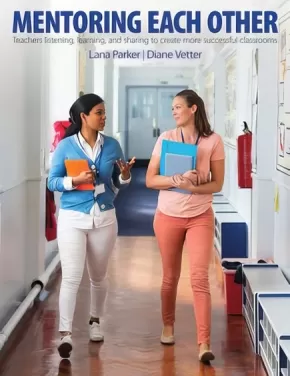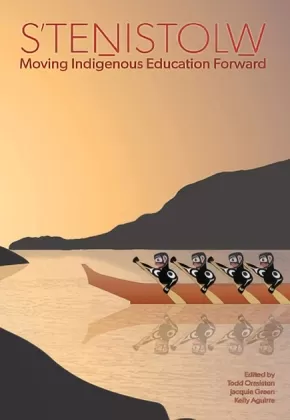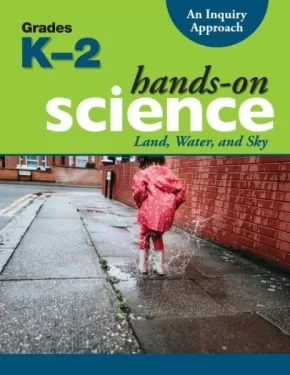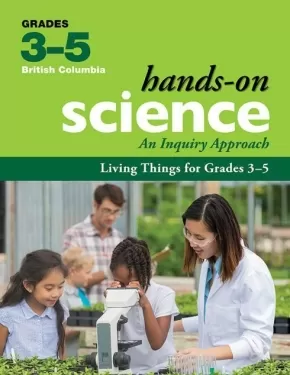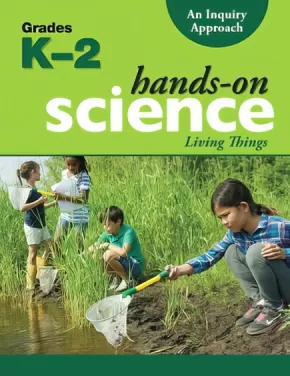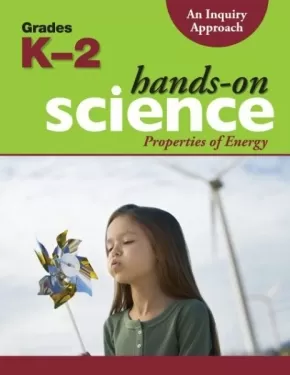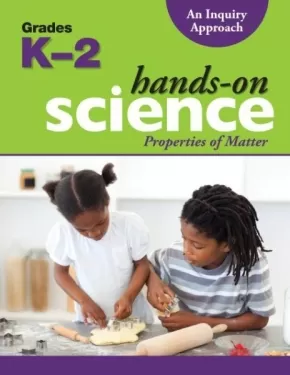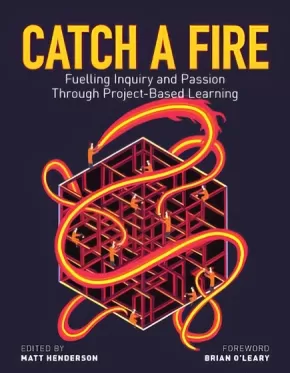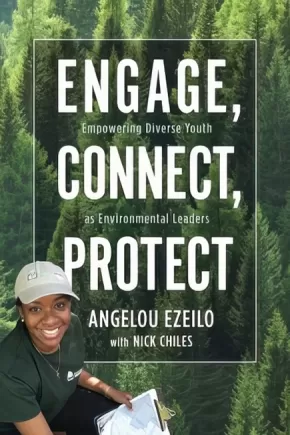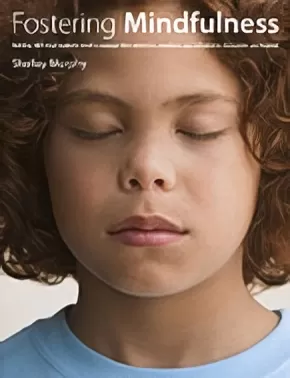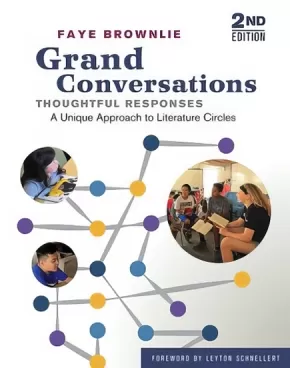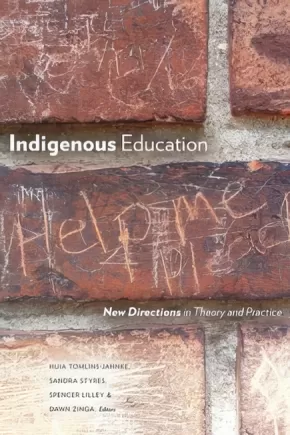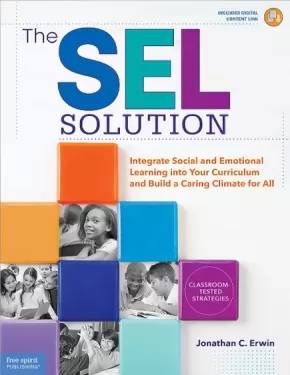Building Strong Learning
Synopsis:
In 1867, Canada’s federal government became responsible for the education of Indigenous peoples: Status Indians and some Métis would attend schools on reserves; non-Status Indians and some Métis would attend provincial schools. The chapters in this collection – some reflective, some piercing, all of them insightful – show that this system set the stage for decades of broken promises and misguided experiments that are only now being rectified in the spirit of truth and reconciliation. The contributors individually explore what must change in order to work toward reconciliation; collectively, they reveal the possibilities and challenges associated with incorporating Traditional Knowledge and Indigenous teaching and healing practices into school courses and programs.
Reviews
"This book provides innovative reflections on long-standing issues in Indigenous education in Canada and suggests possible pathways to address the educational debt that Canada owes Indigenous peoples. I recommend it to educators, students, and administrators, to anyone interested in learning about the history of residential schools, and to all readers who are interested in reconciliation and decolonisation." — Valentina de Riso, Nottingham Trent University, British Journal of Canadian Studies
"There is no doubting the importance of the subject tackled by this edited collection... In eleven highly diverse chapters, plus a substantial introduction by editor Sheila Carr-Stewart, this collection seeks to shed light on the mechanisms of educational exclusion and sound out the prospects for a different kind of education in the future." — Mark Fettes, Simon Fraser University, University of Toronto Quarterly
"Readers who are new to the topic, such as practicing teachers who wish to enhance their responsiveness to Indigenous students or undergraduate history majors, will gain accessible historical and policy context, alongside complex and nuanced representations of the challenges that pervade Indigenous education today." — Heather E. McGregor, Historical Studies in Education
"Knowing the Past, Facing the Future is critical reading for those invested in Indigenous education, as all Canadians ought to be. By confronting colonialism and racism as they intersect with reconciliation, the contributors of this collected work address the role and responsibility of education in decolonizing a society. I recommend this book be read by all educators."— Margaret Kovach, author of Indigenous Methodologies: Characteristics, Conversations, and Contexts
"New and seasoned readers to Indigenous education in Canada will value how the authors tackle old issues in new ways, uncover challenges that have been ignored, and present innovative possibilities that learn from the past for a much better future."— Jo-ann Archibald (Q’um Q’um Xiiem), co-editor of Decolonizing Research: Indigenous Storywork as Methodology
"This must-read collection of essays provides needed historic reflections on treaties and Indigenous peoples’ aspirations for education, and much needed insight, support, and research to address the reconciliation agenda and correct the longstanding educational debt owed Indigenous peoples."— Marie Battiste, author of Decolonizing Education: Nourishing the Learning Spirit
Educator Information
Contributors: Jonathan Anuik, Michael Cottrell, Karlee D. Fellner, Rosalind Hardie, Darryl Hunter, Harry Lafond, Solange Lalonde, Brooke Madden, Yvonne Poitras Pratt, Jane P. Preston, Larry Prochner, Noella Steinhauer
Additional Information
312 pages | 6.00" x 9.00" | Paperback
Synopsis:
This practical book explores ways teachers can collaborate and learn from each other in formal and informal situations. It demonstrates that a mentoring relationship can benefit both new and experienced teachers. Full of strategies that are practical and easy to implement, the book offers solutions to common questions, opportunities, and challenges that face teachers every day. Based on extensive experience, this highly readable book includes personal histories and experiences around important values and advocates for honest reflection and meaningful feedback. An essential resource for all educators, the book champions reciprocal and ongoing processes of learning, listening, and sharing.
Educator Information
Key Features:
- This book features ready-to-use strategies demonstrate how mentoring for teacher excellence can be easily implemented in daily practice.
- Mentoring Each Other includes practical advice for educators who engage in mentoring relationship as well as valuable suggestions that help new teachers deal with classroom challenges.
- The authors have vast experience as mentors, classroom teachers, and university lecturers who present at major educational conferences across North America.
- This approach to mentoring is applicable to a broad range of professional learning communities and an increase in new teachers entering the system make this a much-needed resource for many.
Additional Information
160 pages | 8.38" x 10.88"
Synopsis:
S’TENISTOLW is a SENĆOŦEN term referencing the concept of ‘moving forward’. This book highlights both the doing and being of Indigenous education. Authors share their knowledge on the themes of: Land-Based Learning; Supporting Learners; Indigenization; and Strengthening Alliances. Keynote writings by renowned Indigenous scholars Gregory Cajete, Graham Hingangaroa Smith, Linda Tuhiwai Smith and Kathy Absolon are intertwined throughout the book.
Reviews"
"This book is like a visit home, to talk with the wisest people you know on your reserve or in your neighbourhood. There is an intimacy in how each author shares their own stories of hope, insight and resilience. You will be nourished, strengthened, and inspired. You may be even gently chastised as you read about how Indigenous ways of learning are gaining ground in the educational settings around us. If you enjoy such visits you will treasure this book." — John Borrows, PhD, Canada Research Chair in Indigenous Law, University of Victoria
"S’TENISTOLW is a wonderful feast of stories, experiences, teachings, and approaches of educational and community leaders involved in Indigenous post-secondary education. Practitioners-scholars-leaders receive gifts of hope, inspiration, and transforming potential to live Indigenous education in good ways through innovative Indigenous pedagogies, relational theories, authentic community and land-based programs, and critical engagement." — Jo-Ann Archibald, PhD, Professor of Educational Studies, University of British Columbia
"I can’t wait to share this book! It offers timely and pivotal insights from leading theorists and practitioners about the transformational project of “Indigenizing” the academy and other institutions. I’m sure it will serve educators, students and community members alike as we think through complex questions of transformative, Indigenous knowledge production and education." — Kim Anderson, PhD Canada Research Chair in Indigenous Relationships, University of Guelph
Additional Information
166 pages | 6.00" x 9.00"
Synopsis:
Teaching Tough Topics shows teachers how to lead students to become caring citizens as they read and respond to quality children’s literature. It focuses on topics that can be challenging or sensitive yet significant for building an understanding of social justice, diversity and equity. Racism, homophobia, bullying, religious intolerance, poverty, and physical and mental challenges are just some of the themes explored. The book is rooted in the belief that, by using picture books, novels, poetry, and nonfiction, teachers can enrich learning with compassion and empathy as students make connections to texts, to others and to the world.
Educator Information
Teaching Tough Topics is a timely approach to a better understanding of diversity, equity and social justice with clear instructions on how to implement a range of instructional strategies at different grade levels.
This book offers a valuable overview of tough topics including bullying, poverty, homophobia, gender, racism, death, Indigenous culture, physical and mental challenges, and religious intolerance.
Includes a comprehensive, up-to-date book list including picture books, novels, poetry and nonfiction titles that can be used to explore each topic.
Contains some Indigenous content.
Additional Information
144 pages | 8.38" x 10.88"
Synopsis:
Land, Water, and Sky from Hands-On Science: An Inquiry Approach completely aligns with the redesigned Science Curriculum for British Columbia. Grounded in the Know-Do-Understand model, First Peoples’ knowledge and perspectives, and student-driven scientific inquiry, this custom-written resource:
- emphasizes Core Competencies, so students engage in deeper and lifelong learning
- develops Curricular Competencies as students explore science through hands-on activities
- fosters a deep understanding of the Big Ideas in science
Using proven Hands-On features, Land, Water, and Sky contains information and materials for both teachers and students including: Curricular Competencies correlation charts; background information on the science topics; complete, easy-to-follow lesson plans; reproducible student materials; and materials lists.
Innovative new elements have been developed specifically for the new curriculum:
- a multi-age approach
- a five-part instructional process—Engage, Explore, Expand, Embed, Enhance
- an emphasis on technology, sustainability, and personalized learning
- a fully developed assessment plan for summative, formative, and student self-assessment
- a focus on real-life Applied Design, Skills, and Technologies
- learning centres that focus on multiple intelligences and universal design for learning (UDL)
- place-based learning activities, Makerspace centres, and Loose Parts
In Land, Water, and Sky students investigate characteristics of the land, water, and sky. Core Competencies and Curricular Competencies will be addressed while students explore the following Big Ideas:
- Daily and seasonal changes affect all living things.
- Observable patterns and cycles occur in the local sky and landscape.
- Water is essential to all living things, and it cycles through the environment.
Educator Information
This book is from the Hands-On Science: An Inquiry Approach (for BC) series. The new Hands-On Science comprehensive resources completely align with the redesigned Science Curriculum for British Columbia.
Recommended for use with children ages 4-8.
Additional Information
150 pages | 8.5 " x 11"
Synopsis:
Living Things from Hands-On Science for British Columbia completely aligns with BC’s New Curriculum for Science. Grounded in the Know-Do-Understand model, First Peoples knowledge and perspectives, and student-driven scientific inquiry, this custom-written resource:
- emphasizes Core Competencies, so students engage in deeper and lifelong learning
- develops Curricular Competencies through hands-on activities
- fosters a deep understanding of the Big Ideas in science
Using proven Hands-On features, Living Things contains information and materials for both teachers and students including: Curricular Competencies correlation charts; background information on the science topics; complete, easy-to-follow lesson plans; reproducible student materials; and materials lists.
Innovative new elements have been developed specifically for the new curriculum:
- a multi-age approach
- an emphasis on technology, sustainability, and personalized learning
- a fully developed assessment plan for summative, formative, and student self-assessment
- a focus on real-life Applied Design, Skills, and Technologies
- learning centres that focus on multiple intelligences and universal design for learning (UDL)
- place-based learning activities and Makerspaces
Living Things for Grades 3-5 addresses Core Competencies and Learning Standards while students
explore the following Big Ideas:
- Living things are diverse, can be grouped, and interact in their ecosystems.
- All living things sense and respond to their environment.
- Multicellular organisms have organ systems that enable them to survive and interact within their environment.
Educator Information
This book is from the Hands-On Science: An Inquiry Approach (for BC) series. The new Hands-On Science comprehensive resources completely align with the redesigned Science Curriculum for British Columbia.
Recommended for use with students in grades 3 to 5.
Additional Information
150 pages | 8.50" x 11.00"
Synopsis:
Living Things from Hands-On Science: An Inquiry Approach completely aligns with the redesigned Science Curriculum for British Columbia. Grounded in the Know-Do-Understand model, First Peoples’ knowledge and perspectives, and student-driven scientific inquiry, this custom-written resource:
- emphasizes Core Competencies, so students engage in deeper and lifelong learning
- develops Curricular Competencies as students explore science through hands-on activities
- fosters a deep understanding of the Big Ideas in science
Using proven Hands-On features, Living Things contains information and materials for both teachers and students including: Curricular Competencies correlation charts; background information on the science topics; complete, easy-to-follow lesson plans; reproducible student materials; and materials lists.
Innovative new elements have been developed specifically for the new curriculum:
- a multi-age approach
- a five-part instructional process—Engage, Explore, Expand, Embed, Enhance
- an emphasis on technology, sustainability, and personalized learning
- a fully developed assessment plan for summative, formative, and student self-assessment
- a focus on real-life Applied Design, Skills, and Technologies
- learning centres that focus on multiple intelligences and universal design for learning (UDL)
- place-based learning activities, Makerspace centres, and Loose Parts
In Living Things students investigate plants and animals. Core Competencies and Curricular Competencies will be addressed while students explore the following Big Ideas:
- Plants and animals have observable features.
- Living things have features and behaviours that help them survive in their environment.
- Living things have life cycles adapted to their environment.
Educator Information
This book is from the Hands-On Science: An Inquiry Approach (for BC) series. The new Hands-On Science comprehensive resources completely align with the redesigned Science Curriculum for British Columbia.
Recommended for use with children ages 4-8.
Additional Information
150 pages | 8.5 " x 11"
Synopsis:
Properties of Energy from Hands-On Science: An Inquiry Approach completely aligns with the redesigned Science Curriculum for British Columbia. Grounded in the Know-Do-Understand model, First Peoples’ knowledge and perspectives, and student-driven scientific inquiry, this custom-written resource:
- emphasizes Core Competencies, so students engage in deeper and lifelong learning
- develops Curricular Competencies as students explore science through hands-on activities
- fosters a deep understanding of the Big Ideas in science
Using proven Hands-On features, Properties of Energy contains information and materials for both teachers and students including: Curricular Competencies correlation charts; background information on the science topics; complete, easy-to-follow lesson plans; reproducible student materials; and materials lists.
Innovative new elements have been developed specifically for the new curriculum:
- a multi-age approach
- a five-part instructional process—Engage, Explore, Expand, Embed, Enhance
- an emphasis on technology, sustainability, and personalized learning
- a fully developed assessment plan for summative, formative, and student self-assessment
- a focus on real-life Applied Design, Skills, and Technologies
- learning centres that focus on multiple intelligences and universal design for learning (UDL)
- place-based learning activities, Makerspace centres, and Loose Parts
In Properties of Energy students investigate properties of energy. Core Competencies and Curricular Competencies will be addressed while students explore the following Big Ideas:
- The motion of objects depends on their properties.
- Light and sound can be produced and their properties can be changed.
- Forces influence the motion of an object.
Educator Information
This book is from the Hands-On Science: An Inquiry Approach (for BC) series. The new Hands-On Science comprehensive resources completely align with the redesigned Science Curriculum for British Columbia.
Recommended for use with children ages 4-8.
Additional Information
181 pages | 8.5 " x 11"
Synopsis:
Properties of Matter from Hands-On Science: An Inquiry Approach completely aligns with the redesigned Science Curriculum for British Columbia. Grounded in the Know-Do-Understand model, First Peoples’ knowledge and perspectives, and student-driven scientific inquiry, this custom-written resource:
- emphasizes Core Competencies, so students engage in deeper and lifelong learning
- develops Curricular Competencies as students explore science through hands-on activities
- fosters a deep understanding of the Big Ideas in science
Using proven Hands-On features, Properties of Matter contains information and materials for both teachers and students including: Curricular Competencies correlation charts; background information on the science topics; complete, easy-to-follow lesson plans; reproducible student materials; and materials lists.
Innovative new elements have been developed specifically for the new curriculum:
- a multi-age approach
- a five-part instructional process—Engage, Explore, Expand, Embed, Enhance
- an emphasis on technology, sustainability, and personalized learning
- a fully developed assessment plan for summative, formative, and student self-assessment
- a focus on real-life Applied Design, Skills, and Technologies
- learning centres that focus on multiple intelligences and universal design for learning (UDL)
- place-based learning activities, Makerspace centres, and Loose Parts
In Properties of Matter students investigate matter. Core Competencies and Curricular Competencies will be addressed while students explore the following Big Ideas:
- Humans interact with matter every day through familiar materials.
- Materials can be changed through physical and chemical processes.
- Matter is useful because of its properties.
Educator Information
This book is from the Hands-On Science: An Inquiry Approach (for BC) series. The new Hands-On Science comprehensive resources completely align with the redesigned Science Curriculum for British Columbia.
Recommended for use with children ages 4-8.
Additional Information
150 pages | 8.5" x 11"
Synopsis:
This book will inspire, challenge and engage you—and transform your teaching and learning.
Each chapter in this book is written by a different educator or team about their experiences with project-based learning, both in and out of the classroom. They reflect not only on the how of project-based learning, but more importantly, on the what and the why. They offer insight into how connecting with learners, honouring their experiences, and promoting deep and rich questioning can be the path to powerful projects and learning. Their writing and thinking is saturated with empathy, expertise, a desire to improve their practice, and an acknowledgment of the need to collaborate.
Reviews
"...an impressive book written by and for a range of practitioners that show how Project Based Learning can be used in all sorts of environments with all learners. This is a very handy book for educators interested in refining their project-based learning chops." — Elliot Washore, Ed.D., Co-founder Big Picture Learning
"Catch A Fire is the right book at the right time for anyone interested in the transformative potential of project-based learning. Henderson has put together an incredible array of case studies, examples, and voices on the methodology that will prove both useful and thought provoking to educators of all shapes and sizes. Read this book and get inspired." — Jay Roberts, Professor of Education at Earlham College, author of Beyond Learning By Doing
Educator Information
For K-12 educators.
Additional Information
224 pages | 7.00" x 9.00"
Synopsis:
Building environmental strength through a diversity of youth.
While concern about the state of our land, air, and water continues to grow, there is widespread belief that environmental issues are primarily of interest to wealthy white communities. Engage, Connect, Protect explodes this myth, revealing the deep and abiding interest that African American, Latino, and Native American communities – many of whom live in degraded and polluted parts of the country – have in our collective environment.
Part eye-opening critique of the cultural divide in environmentalism, part biography of a leading social entrepreneur, and part practical toolkit for engaging diverse youth, Engage, Connect, Protect covers:
- Why communities of color are largely unrecognized in the environmental movement
- Bridging the cultural divide and activate a new generation of environmental stewards
- A curriculum for engaging diverse youth and young adults through culturally appropriate methods and activities
- A resource guide for connecting mainstream America to organizations working with diverse youth within environmental projects, training, and employment.
Engage, Connect, Protect is a wake-up call for businesses, activists, educators, and policymakers to recognize the work of grassroots activists in diverse communities and create opportunities for engaging with diverse youth as the next generation of environmental stewards.
Educator Information
While this work has a US focus, it is still extremely relevant in other countries like Canada.
Additional Information
256 pages | 6.00" x 9.00"
Synopsis:
An essential guide to mindfulness activities and strategies that help students cultivate the skills they need for self-regulation, stress management, and learning. Simple activities and practices throughout the book are designed to strengthen areas of the brain that allow students to better manage their attention, emotions, and behavior in the classroom and beyond. Child-friendly language is used to explain mindfulness, physiology, and brain science.
This practical book shows you how to incorporate mindfulness in your classroom practice in just minutes a day, and includes definitions, teaching tips, and activities for
- making mindful breathing a core foundational practice
- using the five senses as anchors for mindfulness
- helping students recognize, name, and manage their feelings
- exploring the connection between body and mind through movement
- incorporating practices that encourage students to focus their attention in the present moment
- creating and using a Peace Corner in the classroom that is devoted to self-regulation and self-care
- developing habits of mind that are central to resilience
This comprehensive resource offers step-by-step instructions, scripts, activity sheets, ready-to-use templates, and scientific insights. Based on extensive classroom experience, this highly readable book includes stories from teachers who successfully incorporate mindfulness in their classroom practice.
Ideal for new and experienced teachers, Fostering Mindfulness is committed to building skills that nurture attention, cognitive and emotional development, and overall well-being.
Educator Information
Recommended for educators teaching ages 5 - 13.
Additional Information
167 pages | 8.30" x 10.80"
Synopsis:
Grand Conversations, Thoughtful Responses is built upon the premise that all students can become active, independent, thoughtful readers. The structures and strategies in this book are proven to help students develop confidence and competence in their reading.
Student engagement with text soars through participation in grand conversations with peers and reflecting on reading with thoughtful, written responses. This unique approach includes:
- student choice in books
- students reading at their own pace, thus creating flexible groups
- literature circle groups where students discuss the shared text they are reading
- strategies for teaching written response
- strategies for co-creating assessment criteria
- additional activities to develop and deepen comprehension
- book lists
Reviews
"With this unique approach to literature circles, our students are reading more, are writing more and are excited about talking about their books! The enthusiasm in the class is contagious with even our more reluctant readers wanting more time – and more books - to read. It is a pleasure to join a group and participate in the conversation. Our students’ ability to make deep connections to one and other and to their reading is amazing." - Tanis Anderson, Literacy Programme Consultant, K-12 and a team of Burnaby teachers
Educator Information
Faye Brownlie is one of British Columbia's most sought-after literacy and learning experts. She works in staff development locally, nationally and internationally and has been a long-time advocate of improved learning for all students in inclusive settings.
What distinguishes this book’s approach is that it advocates students having a choice in what and how much they read, which in turn grows strong, thoughtful, sophisticated readers.
Additional Information
100 pages | 6.00" x 9.00" | 2nd Edition
● Sandra Styres (Indigenous Canadian; First Nations; Haudenosaunee (Iroquois); Kanyen'keha:ka (Mohawk);)
● Huia Tomlins-Jahnke (Indigenous New Zealander; Maori; Ngati Toa Rangatira; Ngati Kahungunu; Ngapuhi; Ngati Hine; Ngai Tahu;)
Synopsis:
For Indigenous students and teachers alike, formal teaching and learning occurs in contested places. In Indigenous Education, leading scholars in contemporary Indigenous education from North America and the Pacific Islands disentangle aspects of education from colonial relations to advance a new, Indigenously-informed philosophy of instruction. Broadly multidisciplinary, this volume explores Indigenous education from theoretical and applied perspectives and invites readers to embrace new ways of thinking about and doing schooling. Part of a growing body of research, this is an exciting, powerful volume for both Indigenous and non-Indigenous scholars, researchers, policy makers, and teachers, and a must-read for anyone who wants to understand the contested spaces of contemporary education.
Contributors: Jill Bevan Brown, Frank Deer, Wiremu Doherty, Dwayne Donald, Ngarewa Hawera, Margie Hohepa, Robert Jahnke, Trish Johnston, Spencer Lilley, Daniel Lipe, Margie Maaka, Angela Nardozi, Kapa Oliviera, Wally Penetito, Michelle Pidgeon, Leonie Pihama, Jean-Paul Restoule, Mari Ropata Te Hei, Sandra Styres, Huia Tomlins-Jahnke, Linda Tuhiwai Smith, Sam L. No’eau Warner, Laiana Wong, Dawn Zinga
Additional Information
480 pages | 6.00" x 9.00"
Synopsis:
Research shows that a socially and emotionally supportive setting is the solution to increasing student achievement. The SEL Solution helps students and adults master critical social and emotional skills, encourages student leadership, provides effective and compassionate behavior management strategies, and increases student success.
Based on William Glasser's Choice Theory, the book shows educators how to integrate lessons on empathy, cooperation, self-regulation, leadership, and a range of other SEL (social and emotional learning) topics into the school day and into social studies and language arts curriculum. This book provides dozens of strategies that are classroom-tested and proven successful. Both fun and easy-to-use, these lessons and activities help create and sustain a positive, thriving school culture.
For use by teachers, counselors, coaches, principals, and other educators, the strategies in this book provide a plan for engaging the whole school community in identifying, celebrating, and sustaining its positive values.
Reviews
“The School Climate Solution is a valuable resource for educators to use in classrooms or throughout a school. Erwin provides a blueprint for establishing a positive school climate and includes step-by-step instructions in how to involve various stakeholders to implement a supportive and effective school atmosphere.”—School Administrator magazine
“One of the strengths of School Climate Solution is its dual focus. Erwin offers strategies and plans for both whole school and single classroom environments, making this a good handbook for almost any educator at any level of influence. The practical nature of the text makes it ideal for group study or action-based work with a school improvement committee or other professional learning community.”—MiddleWeb
“Jon Erwin has been a consistent voice for innovation and rationality in education. He understands, from very practical experience as an educator and as a consultant and trainer, what schools should be. This book is another great contribution from his unique perspective, focusing on school climate and its constituent parts. All schools need to take these ideas very seriously.”—Marvin W. Berkowitz, Ph.D., Sanford N. McDonnell Professor of Character Education
Educator Information
Teachers and administrators, grades K-12.
60 lessons and activities included.
Additional Information
200 pages | 8.50" x 10.98"




